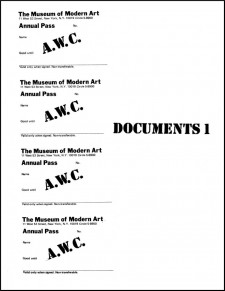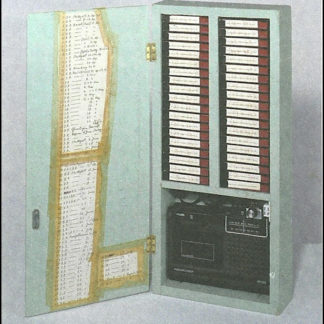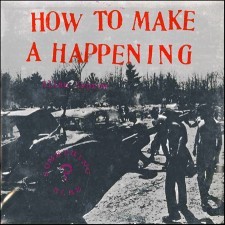Description
Documents 1 is a collection of correspondence, press, and ephemera surrounding the foundation and rise of the Art Worker’s Coalition (AWC), first published at the height of the group’s activity in mid-1969. Beginning with a rallying statement from Greek sculptor Takis—whose withdrawal from an exhibition at the Museum of Modern Art (MoMA) that January directly precipitated the formation of the AWC—the publication is a whirlwind tour of the flourishing group’s rapid development and expanding concerns.
Alongside official statements, fliers, and lists of demands from the AWC, its offshoots, affiliates, and enemies-of-enemies—from Marcel Broodthaers to the Black Emergency Cultural Coalition—Documents 1 includes an extended correspondence with MoMA, and analysis of the historical development and practices of that museum in particular; letters to Richard Nixon and the National Council on the Arts; extensive press coverage (in publications from The East Village Other to The New York Times); photographs of AWC protests and events; and writings by Gregory Battcock, Alex Gross, Len Lye, and others.
Founded in January 1969, the Art Workers’ Coalition was a loose association of artists, writers, and cultural workers organized around shared commitments to social action and the reform and revaluation of art institutions. The immediate catalyst for the group’s formation was the artist Takis’ withdrawal of his work from an exhibition at the Museum of Modern Art (MoMA), in protest of the lack of control afforded artists in the exhibition of their artworks which had been purchased by the museum. The group’s efforts to establish an open dialogue with MoMA were rebuffed, and the museum refused their request to host a public discussion on its responsibilities to artists and the public. In response, the AWC hosted an “open hearing” at the School of Visual Arts on April, 10, 1969, in which “[e]very art worker” was invited “to make a statement of his attitudes and complaints about all art institutions and conditions.”
The widely attended open hearing was a watershed event for the burgeoning group, facilitating the expansion of its aims and premises to be more broadly inclusive. Throughout the early part of 1969, the AWC snowballed into an umbrella organization, its polemical thrust reinforced and widened through the incorporation of diverse sympathetic causes. The group was bent on serving “the best interest of all art workers,” and through their protests and publications—Open Hearing, which both documents and effectively extends the titular event of April, 10, 1969; and Documents 1, an account of the group’s history and its aims through correspondence, press, and ephemera— aired a wide-ranging critique of the art world and Vietnam-era society at large. Reluctant from the start to adopt any kind of centralized, hierarchical organization, the AWC splintered in 1971, giving way to such groups as Art Strike, Guerilla Art Action Group, and Women Artists in Revolution.



